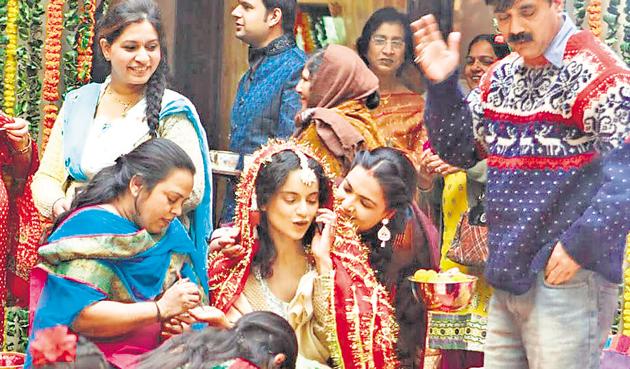The Way We Were: In wedding season, does anyone remember the shaadi ka ghar?
Music all day, sleeping on the floor, a tailor, dhobi and halwai on hand at all times — before the planners took over, everything was done in-house. It was chaotic, messy and so much fun.
Imagine a wedding with not a single planner in sight. No vodka fountain, hotel bookings, hired DJs or gift registries. That’s what weddings were like once upon a time — warm, close-knit family affairs.

This year, shaadis — like so much else — have taken a hit because of Covid-19. The pandemic-era wedding is smaller, but it’s still an expensive, designer, hyper-planned affair.
Gone is the centrality of the shaadi ka ghar, the long list of chores divided up between cousins. In the India of the ’60s, and even the pre-liberalised ’70s and ’80s, a shaadi ka ghar was a very special place. As relatives from all over started arriving in droves, mostly by train, the closest ones would be accommodated in the house. The rest would be sent off to an empty house that had been commandeered for the purpose, or offloaded onto neighbours who had graciously offered up a room or two for guests.
In the main house, a couple of rooms or the verandah would be cleared of furniture and mattresses spread out on the floors. Here people would line up and sleep at night. Not that there was much sleeping. A shaadi ka ghar was supposed to constantly resound with song and dance and music. The dholak could come out at any time of day or night and be handed to the mausi or chachi most adept at playing it. Sundry aunts and cousins, hitching up their saris or tying dupattas firmly around their waists, would dance with abandon while others sang traditional wedding songs. The bawdier songs would elicit shrieks of laughter and there would be much ribbing of the to-be bride / groom.
Food was seldom cooked in the kitchen; a halwai was installed in some other part of the house — perhaps the aangan or a corner of the garden. He cooked everything, and ensured a non-stop supply of tea all day.
In the middle of his novel Andekhe Anjaan Pul (a psychological study of a college girl Ninni’s crushing sense of inferiority because of her dark skin), Hindi writer Rajendra Yadav gives readers a brief glimpse of a typical north Indian or, more accurately, Uttar Pradesh-style provincial shaadi, where everyone was given designated duties and responsibilities and which, with all its hustle and bustle, was also fertile ground for secret flirtations and assignations.
In the novel, the chhat (roof), where the meals are being served, becomes the informal centre of all activity, with people streaming in and out all day. The food, served on disposable pattals and sakoras by members of the family or close friends, is brought up from the halwai to a room on the terrace called the kothar. Ninni, who is in charge of the kothar, gets kissed by mistake by a young man who had actually set up a secret rendezvous with another cousin.
Furtive flirtations may or may not have occurred at every wedding but every shaadi certainly had a distribution of duties. Someone was in charge of picking up people from the railway station, someone else had to make sure the halwai had whatever he needed, yet another person took care of the drinking water arrangements, and so on. Chaos and commotion was almost mandatory. There was always an aunt loudly lamenting that she’d misplaced her best blouse, another roundly cursing the dhobi who still hadn’t returned her sari. Temper tantrums from the family of guests that the driver forgot to pick up, a collective panic attack because the garlands still hadn’t arrived.
Those were simpler times because people simply didn’t have that much money. The driver, tailor, dhobi and halwai were among the few professionals involved. There was also no question of outsourcing a wedding to strangers because it was too important an event. Nor was the wedding held in a hotel. An open ground was usually hired for the occasion, enclosed by a colourful shamiana. A responsible aunt was stationed stolidly behind the happy couple as they greeted their guests, to keep track of the gifts and the money envelopes.
I wonder who would have the courage — or inclination — to host a throwback wedding like this today! (The short answer: no one.)





